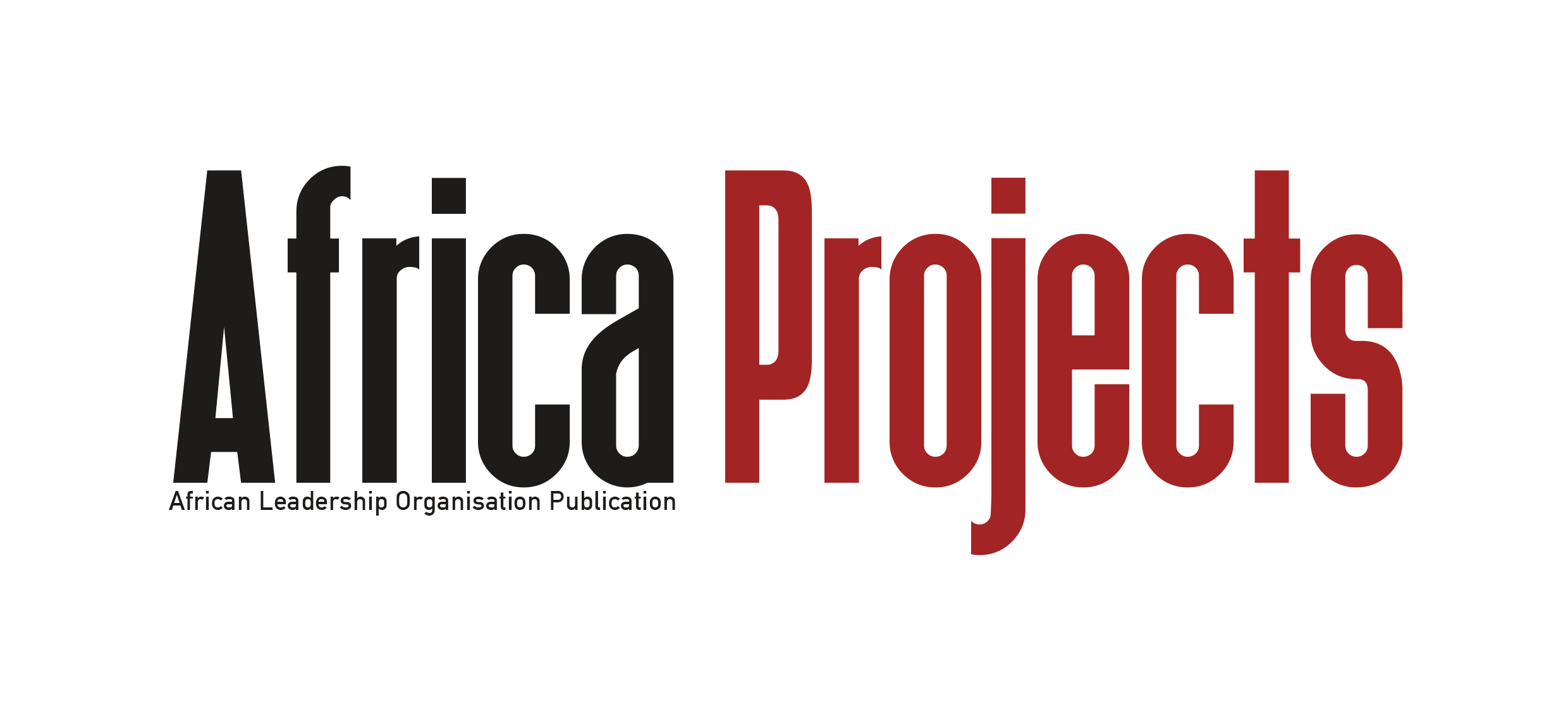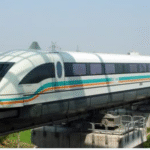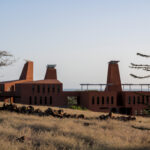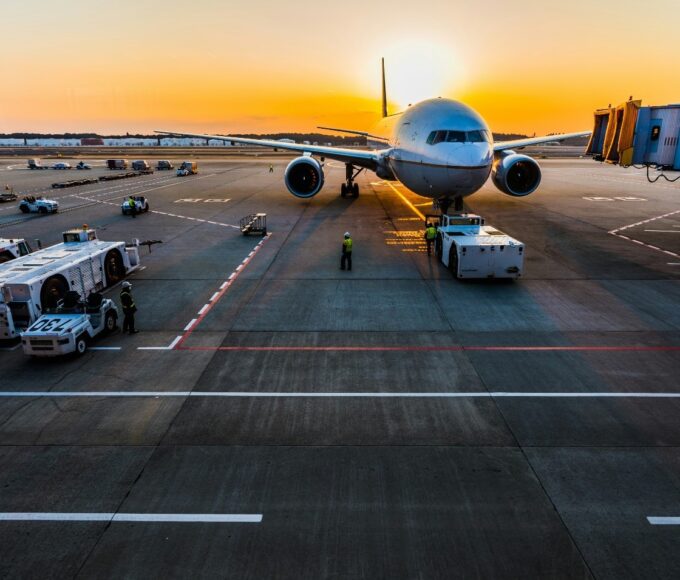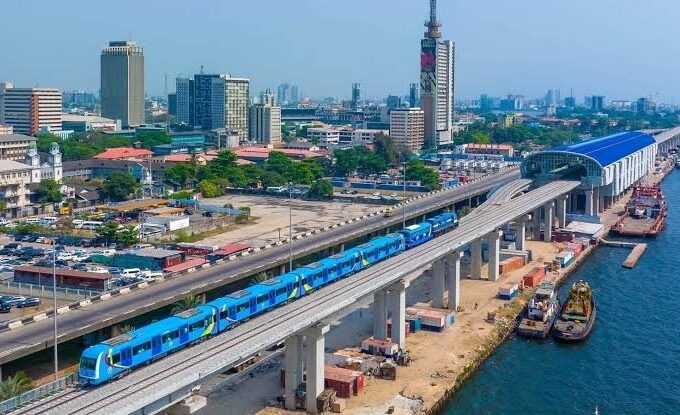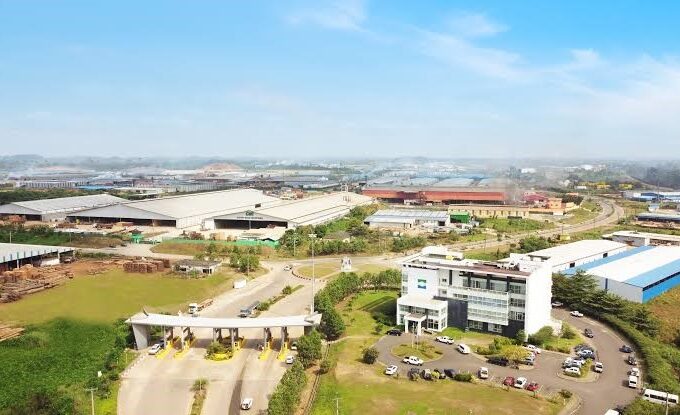- Home
- Features
- Startup Zone
- Projects
- Policies
- Shop
- Policies
- Projects
- Startup Zone
- Country Spotlight
- Analysis
- Tech
- Policies
- Projects
- Startup Zone
- Country Spotlight
- Analysis
- More
- Beyond the Kalashnikov: Africa’s Shift Toward Technology-Driven Warfare
- Afrail Express: Uniting a Continent on Rails
- AFRICA’S ENERGY CORRIDORS: CONNECTING POWER, PEOPLE, AND PROSPERITY
- Startup Lions Campus: Empowering Kenya’s Digital Generation
- L’Art de Vivre’s Le Paradis de Mahdia: Tunisia’s Model for Sustainable Luxury
- The Lobito Corridor: Rewiring Africa’s Trade Arteries Through Strategic Infrastructure
- AFRICA’S GREEN ENERGY TRANSITION: A BEACON OF HOPE FOR CLIMATE ACTION
- Dangote Refinery: Showcasing Africa’s Project Success Story
- AFRICA GREEN ECONOMY: ALL YOU NEED TO KNOW
- The Most Important Amicus Brief in the History of the World
- The Rise of Indigenous UAVs: Africa’s Drone Capabilities in Warfare and Surveillance
- AFRICA’S LARGEST OIL PRODUCERS: A COMPREHENSIVE OVERVIEW
- Beyond the Kalashnikov: Africa’s Shift Toward Technology-Driven Warfare
- Afrail Express: Uniting a Continent on Rails
- AFRICA’S ENERGY CORRIDORS: CONNECTING POWER, PEOPLE, AND PROSPERITY
- Startup Lions Campus: Empowering Kenya’s Digital Generation
- L’Art de Vivre’s Le Paradis de Mahdia: Tunisia’s Model for Sustainable Luxury
- The Lobito Corridor: Rewiring Africa’s Trade Arteries Through Strategic Infrastructure
- AFRICA’S GREEN ENERGY TRANSITION: A BEACON OF HOPE FOR CLIMATE ACTION
- Dangote Refinery: Showcasing Africa’s Project Success Story
- AFRICA GREEN ECONOMY: ALL YOU NEED TO KNOW
- The Most Important Amicus Brief in the History of the World
- The Rise of Indigenous UAVs: Africa’s Drone Capabilities in Warfare and Surveillance
- AFRICA’S LARGEST OIL PRODUCERS: A COMPREHENSIVE OVERVIEW
- Beyond the Kalashnikov: Africa’s Shift Toward Technology-Driven Warfare
- Afrail Express: Uniting a Continent on Rails
- AFRICA’S ENERGY CORRIDORS: CONNECTING POWER, PEOPLE, AND PROSPERITY
- Startup Lions Campus: Empowering Kenya’s Digital Generation
- L’Art de Vivre’s Le Paradis de Mahdia: Tunisia’s Model for Sustainable Luxury
- The Lobito Corridor: Rewiring Africa’s Trade Arteries Through Strategic Infrastructure
- Startup Zone
Top Insights
The Lobito Corridor: Rewiring Africa’s Trade Arteries Through Strategic Infrastructure
Born in 1945 in El Bayadh Province, General Chengriha’s career reflects the arc of Algeria’s modern military history.

In Southern and Central Africa, a new economic lifeline is being carved through rugged terrain and political borders—the Lobito Corridor. Spanning Angola, the Democratic Republic of Congo (DRC), and Zambia, this transformative transregional infrastructure project aims to connect the mineral-rich heartlands of Africa to global markets via the Atlantic Ocean, through Angola’s Port of Lobito.
More than just a railway, the Lobito Corridor is a symbol of regional integration, economic transformation, and Africa’s growing ability to deliver ambitious cross-border projects. It is poised to reshape trade dynamics in sub-Saharan Africa, offering landlocked countries a faster, cheaper, and more secure export route.
Historically, landlocked countries like Zambia and the DRC have faced enormous logistical and cost-related challenges in accessing global markets. Most exports—especially copper and cobalt—have relied on congested or longer eastern routes through ports like Durban or Dar es Salaam.
The Lobito Corridor offers a game-changing alternative:
- Distance Reduction: Shortens export routes to the Atlantic by up to 1,000 kilometres.
- Cost Efficiency: Cuts transportation costs by as much as 40%.
- Time Advantage: Enables cargo to reach global markets in nearly half the time compared to traditional eastern corridors.
By reviving and upgrading the historic Benguela Railway and linking it to key mining belts, the corridor provides the physical infrastructure necessary for regional economic diversification and sustainable development.
The Lobito Corridor is a multi-modal transport network stretching over 1,300 kilometres from the Port of Lobito on Angola’s Atlantic coast to the mining hubs of Kolwezi in the DRC and the Copperbelt in Zambia.
Key components include:
- Railway Modernisation: Rehabilitation of the Benguela Railway from Lobito to Luau, near the DRC border.
- New Rail Links: Future expansion into the Zambian rail system to complete the tri-country connection.
- Port Upgrades: Modernisation of the Port of Lobito to handle increased mineral and cargo volumes.
- Logistics Hubs: Development of dry ports, customs facilities, and industrial zones along the route.
The project is supported by major international partners, including the United States, the European Union, the African Development Bank, and private sector operators through public-private partnerships (PPPs).
The Lobito Corridor is more than a transport system—it is an economic development accelerator. For mineral-rich regions in the DRC and Zambia, it provides a long-awaited outlet to monetise resources more competitively.
Projected benefits include:
- Increased Mineral Exports: Facilitates the efficient transport of copper, cobalt, manganese, and lithium.
- Job Creation: Thousands of direct and indirect jobs across construction, logistics, and trade.
- Intra-African Trade Boost: Enhances regional integration and economic cooperation among Angola, Zambia, and the DRC.
- Private Sector Investment: Encourages new investments in mining, agriculture, and manufacturing along the corridor.
A Continental Trend: African Infrastructure Projects Taking Centre Stage
The success and strategic intent behind the Lobito Corridor echo a growing continental trend—Africa is investing in itself. The project joins other groundbreaking developments like:
- The African Integrated High-Speed Rail Network (AIHSRN).
- Kenya’s LAPSSET Corridor.
- Nigeria’s Lagos–Kano Railway Modernisation.
- Morocco’s Tangier-Marrakech High-Speed Rail.
Together, these projects showcase Africa’s commitment to regional connectivity, industrial development, and reducing trade barriers in line with the African Continental Free Trade Area (AfCFTA) agenda.
The Lobito Corridor has also garnered global interest due to its geopolitical and strategic importance. Western nations see the project as a means to:
- Diversify global mineral supply chains, especially for electric vehicle (EV) and green energy technologies.
- Reduce China’s dominance over critical minerals from the DRC and Zambia.
- Promote democratic, rules-based investment in African infrastructure through the G7’s Partnership for Global Infrastructure and Investment (PGII).
This strategic alignment has led to significant technical and financial backing, ensuring the corridor’s long-term viability and alignment with global sustainability standards.

While the vision is grand, the project is not without obstacles:
- Border Coordination: Cross-border customs harmonisation remains a challenge.
- Security Concerns: Some stretches, particularly in eastern DRC, are prone to instability.
- Maintenance and Governance: Ensuring transparent management and sustainability of operations.
However, the trilateral cooperation between Angola, Zambia, and the DRC—underpinned by support from multilateral institutions—has laid the foundation for a robust framework to overcome these hurdles.
The Lobito Corridor is a flagship of Africa’s new era of infrastructure-led transformation. It demonstrates that the continent can not only envision mega projects but also implement them at scale and with strategic foresight.
By linking the resource-rich interiors of Southern and Central Africa to the world, the corridor reduces trade isolation, enhances industrial competitiveness, and positions the region for long-term prosperity.
More importantly, it signals a fundamental shift in Africa’s development story—from aid dependency and fragmented logistics to interconnected economies building shared futures. As global demand for African minerals surges, the Lobito Corridor will be the bridge between promise and prosperity.
In this ambitious infrastructure, Africa is not just moving goods—it is moving forward.
Recent Posts
Related Articles
Airports in Transformation: Ethiopia’s Vision for Bole
Ethiopia is charting an ambitious course to elevate its status as Africa’s...
ByafricaprojectAugust 13, 2025Women in South African Construction: Progress and the Road to Equality Ahead of Women’s Day 2025
As South Africa approaches National Women’s Day on August 9, 2025, there’s...
Byadmag_adminJune 12, 2025TOP 5 MEGA CITIES IN AFRICA
Africa is home to some of the fastest-growing cities in the world....
Byadmag_adminJune 12, 2025From Vision To Value: How Africa’s Special Economic Zones Are Powering Industrialisation
The signs of an industrial revolution, driven by the strategic development of...
Byadmag_adminJune 11, 2025